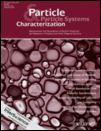
PARTICLE & PARTICLE SYSTEMS CHARACTERIZATION
metrics 2024
Characterizing Particles for a Brighter Scientific Future
Introduction
PARTICLE & PARTICLE SYSTEMS CHARACTERIZATION is a distinguished journal dedicated to advancing the knowledge within the fields of Chemistry, Condensed Matter Physics, and Materials Science. Published by WILEY-V C H VERLAG GMBH in Germany, this journal has established a solid reputation since its inception in 1984, showcasing research aimed at understanding the intricate properties and behaviors of particulate systems. With an impressive Q2 ranking in its respective categories and Scopus ranks indicating a robust standing in the global research community, it serves as an essential resource for researchers, professionals, and students. Although it does not currently offer Open Access options, its comprehensive articles and reviews provide valuable insights that contribute significantly to the ongoing discourse in these scientific domains. As it prepares to celebrate four decades of publication, PARTICLE & PARTICLE SYSTEMS CHARACTERIZATION continues to provide a vital platform for emerging knowledge, fostering innovation and collaboration among scientists dedicated to the study of particle systems.
Metrics 2024
 0.60
0.60 2.70
2.70 2.70
2.70 68
68Metrics History
Rank 2024
Scopus
IF (Web Of Science)
JCI (Web Of Science)
Quartile History
Similar Journals

Journal of Experimental Nanoscience
Pioneering Research in Experimental NanoscienceThe Journal of Experimental Nanoscience, published by Taylor & Francis Ltd, is an esteemed open-access journal dedicated to advancing the field of nanoscience and its applications across various disciplines. Since its establishment, the journal has aimed to provide a comprehensive platform for researchers and professionals to disseminate innovative findings in nanotechnology, bioengineering, and materials science. With an ISSN of 1745-8080 and E-ISSN of 1745-8099, this journal has been pivotal in promoting high-quality research in its converged years from 2006 to 2024. Recognized for its contributions, it currently holds a Q3 ranking in core categories such as Bioengineering, Biomedical Engineering, Materials Science, and Nanoscience and Nanotechnology. Although its H-index is not specified, its Scopus ranks reflect its growing influence, with notable percentiles in various engineering fields. By offering open access since 2016, the Journal of Experimental Nanoscience enhances the accessibility of vital research to a global audience. Researchers, professionals, and students will find this journal an invaluable resource for staying abreast of the latest advancements and breakthroughs in nanoscience.

Journal of Nanostructures
Shaping the Future with Nanostructured InsightsJournal of Nanostructures, published by UNIV KASHAN PRESS, is an esteemed open-access journal that has been actively disseminating groundbreaking research since 2011. With an ISSN of 2251-7871 and an E-ISSN of 2251-788X, this journal has established itself as a significant platform for the exploration of nanostructured materials across various disciplines, including biomaterials, electronic, optical, and magnetic materials. As a testament to its scholarly impact, the journal has achieved notable rankings in its respective categories, including Q3 status in prominent areas such as Mechanics of Materials and Polymers and Plastics. This makes the Journal of Nanostructures a vital resource for researchers and professionals seeking to advance their understanding and innovation in nanotechnology. Furthermore, the journal's commitment to open accessibility ensures that valuable knowledge reaches a diverse audience, facilitating collaboration and growth in this dynamic field. For researchers eager to contribute, the journal offers a platform to publish impactful findings that can influence both academia and industry.

Nanobiotechnology Reports
Unveiling innovations at the nanoscale.Nanobiotechnology Reports, an impactful journal published by PLEIADES PUBLISHING INC, serves as a prominent platform for disseminating cutting-edge research at the intersection of nanotechnology and biotechnology. With its ISSN 2635-1676 and E-ISSN 2635-1684, this open-access journal is committed to providing researchers, professionals, and students with accessible knowledge and innovations that drive advancements in this rapidly evolving field. Operating out of the United States, Nanobiotechnology Reports has established itself in various engineering and science categories, including Bioengineering and Biomedical Engineering, currently holding a Q4 quartile ranking in 2023. Although it is in the early stages of its publication journey since its convergence in 2021, the journal aims to foster collaboration and knowledge-sharing within the scientific community, addressing the complexities of nanomaterials and their applications in biological systems. Researchers and practitioners in nanobiotechnology are encouraged to contribute to this expanding body of knowledge, facilitating the development of innovative solutions that impact various sectors, from healthcare to electronics.
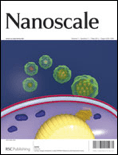
Nanoscale
Transforming Innovations at the Nanoscale.Nanoscale is a premier academic journal published by the Royal Society of Chemistry, dedicated to advancing the field of nanoscience and nanotechnology. With both its ISSN (2040-3364) and E-ISSN (2040-3372) ensuring wide accessibility, the journal is renowned for its high-impact research contributions, reflected in its impressive 2023 Impact Factor and prestigious Q1 ranking in both Materials Science (Miscellaneous) and Nanoscience and Nanotechnology categories. Since its inception in 2009, Nanoscale has fostered a collaborative platform where leading researchers from around the globe share their innovative findings across a multitude of topics spanning from material synthesis to applications in nanotechnology. The journal not only serves as a valuable resource for professionals, researchers, and students but also actively engages the academic community in discussing emerging trends, thus shaping the future of nanoscience. Situated in the heart of the UK at Thomas Graham House, Science Park, Milton Rd, Cambridge CB4 0WF, Nanoscale remains a key publication for those looking to keep abreast of the latest breakthroughs in an ever-evolving field.
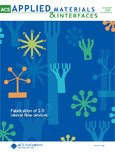
ACS Applied Materials & Interfaces
Transforming Research into Real-World ApplicationsACS Applied Materials & Interfaces, published by the American Chemical Society, stands as a leading journal in the field of applied materials, nanotechnology, and interdisciplinary research in medicine. With an impressive Impact Factor that places it in the Q1 category across Materials Science, Medicine, and Nanoscience and Nanotechnology, this journal consistently ranks among the top tier, evidencing its significance and influence in advancing scientific knowledge. The journal’s scopus ranking of 33 out of 463 in General Materials Science further underscores its critical role in disseminating innovative and high-quality research. Although it is not an open-access journal, a diverse range of access options is available, ensuring that vital research findings are accessible to a broad audience of researchers, professionals, and students. Targeting breakthroughs in the synthesis, characterization, and application of materials and interfaces, ACS Applied Materials & Interfaces serves as a pivotal platform for publishing cutting-edge studies essential for future technological advancements.

JOURNAL OF SOL-GEL SCIENCE AND TECHNOLOGY
Exploring the Synergy of Science and TechnologyJOURNAL OF SOL-GEL SCIENCE AND TECHNOLOGY, published by Springer, is a vital resource within the interdisciplinary fields of materials science and engineering, focusing on innovative research related to sol-gel processes and applications. With a rich publication history spanning from 1993, this journal enables the dissemination of cutting-edge findings in biomaterials, ceramics, and composites, ranking impressively across various categories—Q3 in Biomaterials and Q2 in several other materials-related fields. The journal's commitment to quality research is reflected in its Scopus rankings, particularly notable in the categories of Condensed Matter Physics and Materials Chemistry. Researchers and professionals leveraging the insights from this journal are supported through its comprehensive scope, which bridges theoretical foundations with practical applications, advancing knowledge and fostering collaboration among academics and industry leaders alike. As a non-open access journal, it is essential for subscribers and institutions to engage deeply with the latest advancements documented within its pages, underscoring the journal's role in shaping the future of sol-gel science and technology.

Journal of Nanostructure in Chemistry
Unveiling the Potential of Nanoscale InnovationsThe Journal of Nanostructure in Chemistry, published by Springer Heidelberg, stands at the forefront of nanotechnology and its applications in the field of chemistry. With an impressive Q1 ranking in Chemistry (Miscellaneous) as of 2023, this journal offers a platform for disseminating groundbreaking research and innovative practices that shape the future of nanostructured materials. Recognized among the top-tier publications in its category—with a commendable 96th percentile ranking in Scopus—this journal provides researchers, professionals, and students alike with invaluable insights into the intricate interplay between nanoscale structures and chemical principles. Despite being a non-open access platform, its commitment to high-quality, peer-reviewed content continues to drive scientific discourse and collaboration within the international research community. The Journal of Nanostructure in Chemistry, which spans from 2013 to 2024, is dedicated to advancing knowledge and fostering innovation in nanochemistry, making it an essential resource for anyone looking to stay ahead in this rapidly evolving discipline.
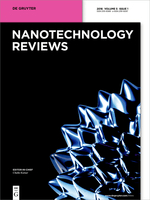
Nanotechnology Reviews
Pioneering Research in NanotechnologyNanotechnology Reviews, published by DE GRUYTER POLAND SP Z O O, stands at the forefront of the multidisciplinary field of nanoscience and nanotechnology. With an Open Access model adopted since 2019, this journal, identifiable by its ISSN 2191-9089 and E-ISSN 2191-9097, disseminates vital research that is accessible to a global audience. The journal is located in Germany and has established itself as a premier platform for innovative research, boasting impressive quartile rankings: Q1 across several categories including Biotechnology, Energy Engineering, and Materials Science, as well as a Q2 classification in Biomaterials as of 2023. The diverse scope enables authors to contribute to a range of topics, from biomedical applications to energy solutions and advanced materials, making it essential reading for researchers, professionals, and students passionate about cutting-edge developments. Additionally, with Scopus rankings highlighting its value across various domains and robust percentiles, including 94 in Engineering (miscellaneous), 93 in Medicine (miscellaneous), and 88 in Biotechnology, Nanotechnology Reviews is an influential and respected journal that fosters scientific dialogue and innovation.

Nano Futures
Transforming Ideas into Nanoscale RealitiesNano Futures, published by IOP Publishing Ltd, is an influential journal dedicated to advancing the field of nanoscale science and technology, encompassing a wide range of disciplines such as Atomic and Molecular Physics, Bioengineering, and Materials Science. With a growing impact within the academic community, this journal has achieved a notable Q2 classification in categories like Chemistry and Electrical Engineering, making it a critical resource for researchers, professionals, and students seeking to explore innovative advancements in nanotechnology. Established in 2017 and operating through 2024, Nano Futures provides open access options for readers, ensuring wider dissemination and engagement with cutting-edge research findings. The journal's commitment to showcasing high-quality research makes it an essential channel for exploring the intersection of nanoscale innovations and practical applications in various industries.
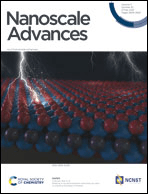
Nanoscale Advances
Exploring the Depths of Nanotechnology Research.Nanoscale Advances, published by the Royal Society of Chemistry, stands out as a leading open-access journal dedicated to advancing the field of nanoscience and nanotechnology since its inception in 2018. With a specialized focus on areas such as atomic and molecular physics, bioengineering, chemistry, and materials science, this journal has consistently achieved top-tier rankings across several categories, reflecting its high-impact contribution to research and innovation. Currently classified in the Q1 quartile for both Atomic and Molecular Physics and Chemistry (Miscellaneous), and Q2 for Bioengineering, its prestige is underscored by impressive Scopus rankings, including a notable 34th position in General Engineering. With its commitment to disseminating high-quality research, Nanoscale Advances serves as an invaluable resource for researchers, professionals, and students alike, fostering collaboration and scholarly exchange in the rapidly evolving landscape of nanotechnology.